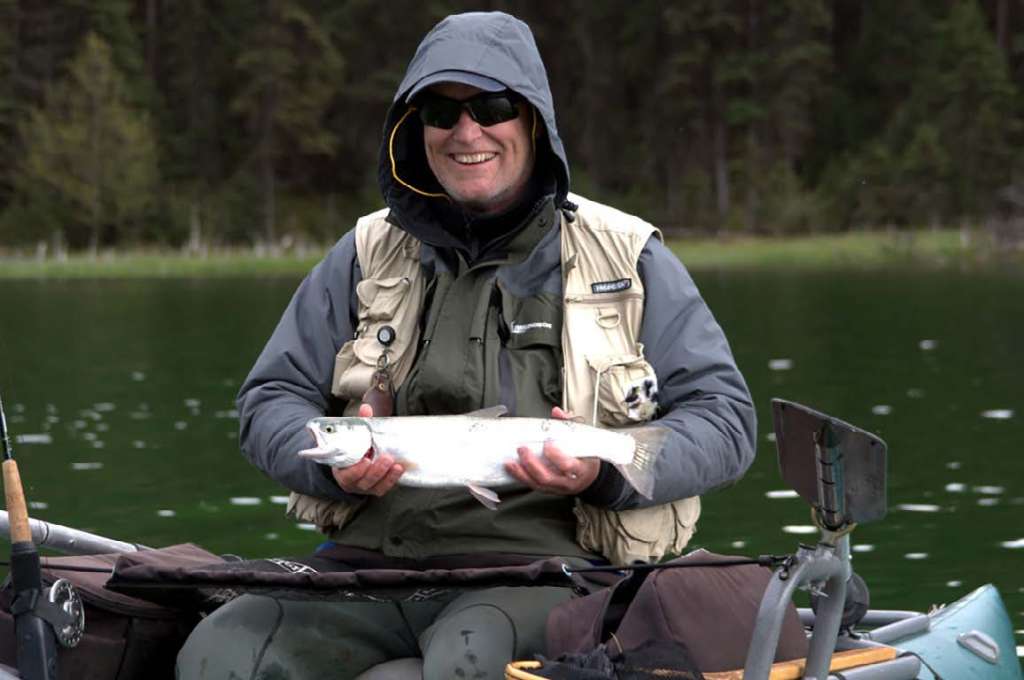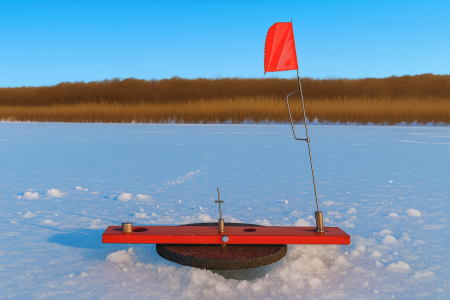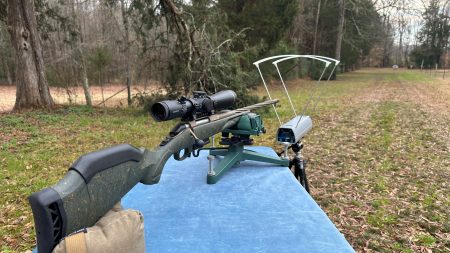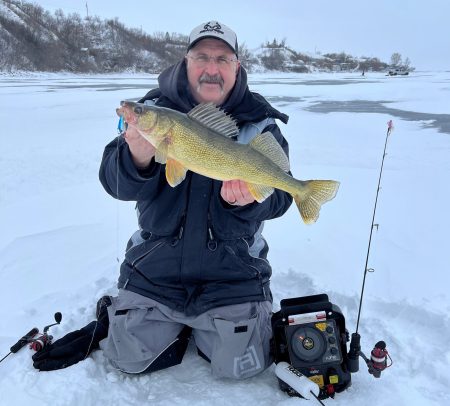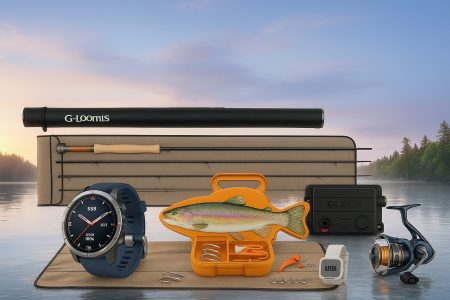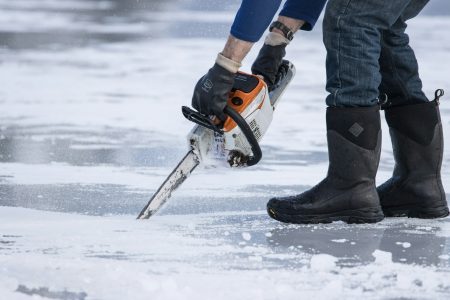Now that we’ve got our rods and lines altogether and we are ready to go fishing, we need a bunch of “stuff” to help us fish efficiently. This is where some of the real fun happens. Getting your “stuff” is like being six years old and turned loose in a candy store again.
Obviously, you are going to need flies to fish with, but we will deal with those in more detail in other articles. Right now, we are going to talk about what we need to pack around with us routinely to make life easier while out on the water.
I have split the accessories into two categories: essentials and non-essentials. Some of you may disagree with how I have categorized some of the items; that’s okay. The beauty of fly fishing is that you get to choose what is best for you personally
ESSENTIALS
Nail Clippers/Line Snips: You have to cut your tippet every time you change flies, which is usually pretty often.
You can use your teeth, but you’ll pay for that sooner or later. Get a good pair of nail clippers that cut readily; you’ll be using this little device a lot.
Hemostats: These handy little fishing pliers are indispensable when trying to dislodge barbed hooks—from the fish or from yourself. It’s another tool you will use often. They save your flies over time because you grip the fly by the bend of the hook with them, instead of gripping the fly by the body with your fingers. This saves your fingers from toothy fish, too.
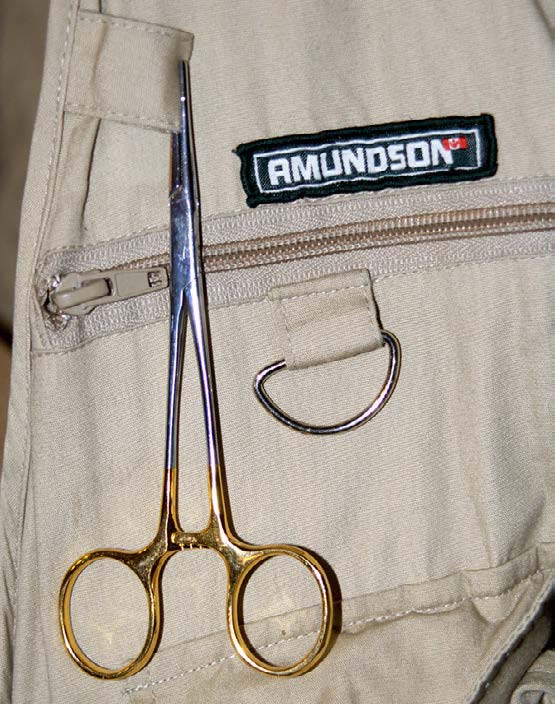
Floating Thermometer: This is arguably not an essential, but especially for learners, it’s a great tool for determining water temperature. It provides a better idea of how active the fish will be and where in the water column they will be in lakes. I bought a floating wine thermometer from the local do-it-yourself wine shop, and it works fine. Remember that it is made of glass, so keep it protected.
Fly Floatant: This is something you must have. You put it on your dry flies before you use them. It repels water and helps keep your floating (dry) flies floating.
Polarized sunglasses: Safety first! Always wear eye protection when fly fishing. Getting a hook in the eye is no fun. I’ve hit my lenses with wayward flies twice in my lifetime; wind can do strange things with your fly’s trajectory. Polarized lenses will allow you to see through the surface glare on the water and into the water to spot fish, as well. It’s true. This gives you an advantage in rivers and in lakes. Here more information about how it works: Polarized VS Non- Polarized Sunglasses – YouTube.
Hook Hone: Get a small one that will clip to your vest on a little pulley. You need to always fish with razor- sharp hooks and sharpening on the water is common and highly recommended. Here is how to do it properly: Should YOU Sharpen Your Hooks? – YouTube.
Retractable Gear Pulleys: Get two of these. Most are single attachment, but some are dual. They are critical for keeping the stuff you use all the time (like the line snips and hook hone) readily available.

Lead: Yes, sometimes you’ll need a small split shot or a twist of lead to get your fly down deep quickly. Half a dozen in a pill bottle in your vest will do. The size will depend on the current and the size of your fly.
Sunscreen: Actually, sunblock. You will be standing in or sitting on a mirror that reflects the sun. Anything exposed will bake and burn. Get sunblock and use it religiously. Don’t get it on your fly lines, because it eats vinyl plastic (your fly-line is vinyl plastic).
First Aid Kit: Buy a pocket first aid kit from your safety store (they come wallet-sized) or better yet, build one with at least the following in it:
- Band-Aids
- Aspirin
- Bee sting stop
- Pressure bandage
- Disinfectant
- Snake bite (if you are fishing snake country)
- Antihistamine
- Back-up medications you need for personal care
Knife: You’ll need a small knife to pack around to clean fish, cut rope and do other odd tasks. I prefer a small, straight, three-inch stainless-steel blade. I also pack a Leatherman for fixing stuff.
Wide-Brimmed Hat: Sunstroke is no fun. Neither is having sun in your eyes all day long. Get a full-brimmed hat like a cowboy hat. It will keep the sun off the back of your neck as well as your face and head, and it will stop rain from going down the back of your neck, as well.
Wading Belt: Get one and wear it. Any belt will do.
I made one from two-inch webbing and a plastic snap closure. It will stop the water from flooding your waders if you fall in and it may save your life in a pinch. It is also a handy place to tie your mesh fish bag.
Fishing Regulations: Better to know your waters and species restrictions when you fish. Having all your gear seized by the local fisheries enforcement officer is not fun.
Rain Gear: Anything will do in a pinch. Even a cheap plastic poncho, but I have this great wading jacket that keeps me dry and totally blocks the wind, too. Either way, getting soaked and cold on the water will shorten your day for sure.
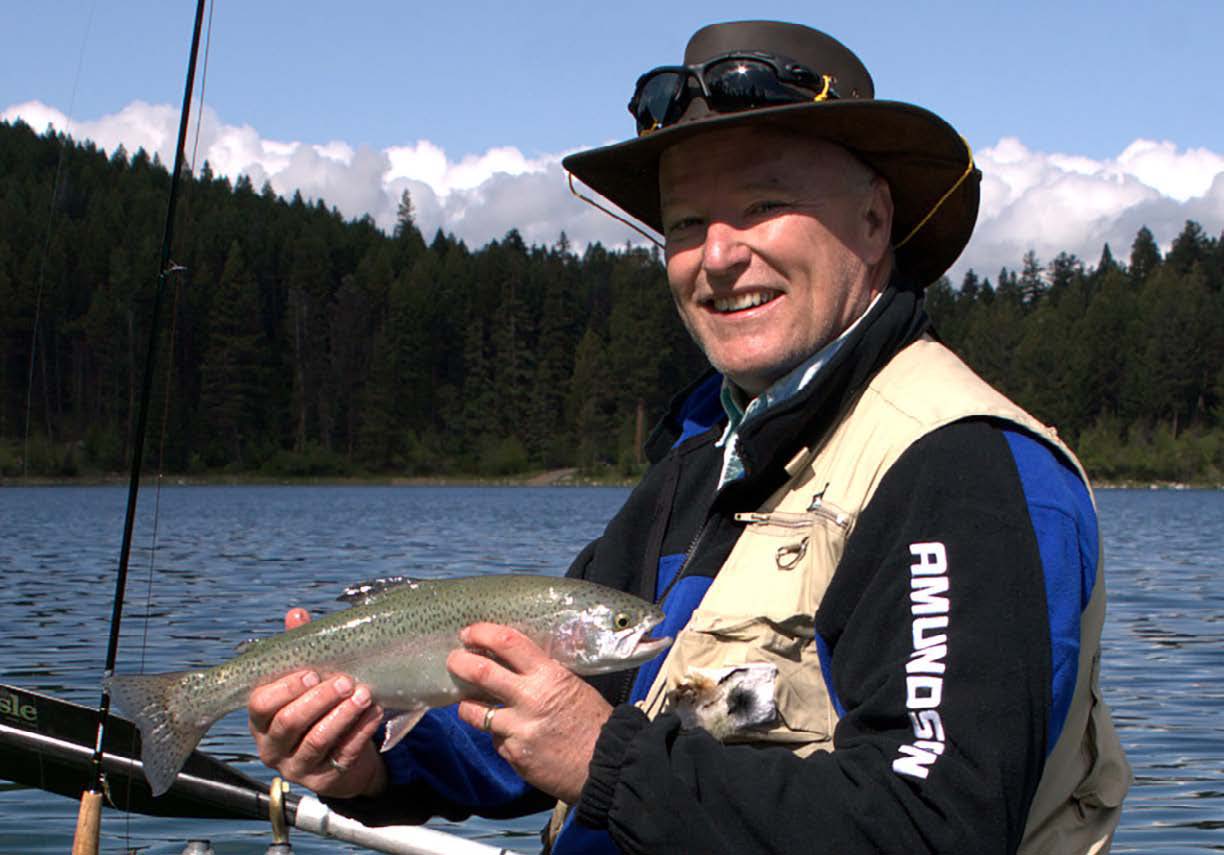
Tape Measure: Regulations for some waters restrict the length of the fish you can keep. It’s best to know the size for sure instead of guessing. Besides, you want bragging rights, don’t you? I know you do; (all fly-fishers do); admit it.
Net: While not essential, it makes it a lot easier to release the fish or keep it. I prefer wood nets, because they float.
Net Retractor: This is a heavy-duty version of the retractable gear pulley mentioned earlier. It clips to the D-ring behind your neck on your fly vest, and it allows your net to stay behind you, while still being accessible for immediate use. It’s a very handy thing.
Line Cleaner: Floating fly lines will gather dirt. Dirt will make the tip of your dry line sink. Clean your line regularly. Don’t use this stuff on your sinking lines because it will make them float.
Stomach Pump: This sounds gross, I know, but it is valuable in finding out what the fish you just caught has been eating. You can use that information to select flies to use.
Stringer or Creel: If you want to keep fish, you’ll need something to hang them on or put them in. Depending upon the situation, I use either a simple piece of thin braided rope tied to a D-ring on my pontoon boat, or a mesh bag tied to my wading belt, if I am wading. They are simple, cheap, and effective.
Line Sink: This stuff is the opposite of fly floatant. Put it on your sinking lines and it removes the surface tension when your line hits the water, thus the line commences sinking immediately instead of hesitating to break through the surface. It’s more useful on lakes than rivers.
Wading Staff: This is essential when wading in stiff current but in weak current, or slack, it’s not essential unless the river bottom is extremely slippery or coarse. It sure comes in handy when you need it, though.
Keep in mind when you go shopping for these items that they are all going to get wet and stay wet for a period of time. If you chase saltwater species, then the items will get saltwater on them. This means that you should always be focused on items that won’t rust or corrode. Most manufacturers know this well and make their stuff out of anodized aluminum or stainless steel. Some do not, so watch out for low-end products. And avoid cheap alternatives like just buying a small toenail clipper to use as a line snipper; I did this for a bit, but the things rusted so quickly that it cost me a lot more money in the end than I thought I was saving.
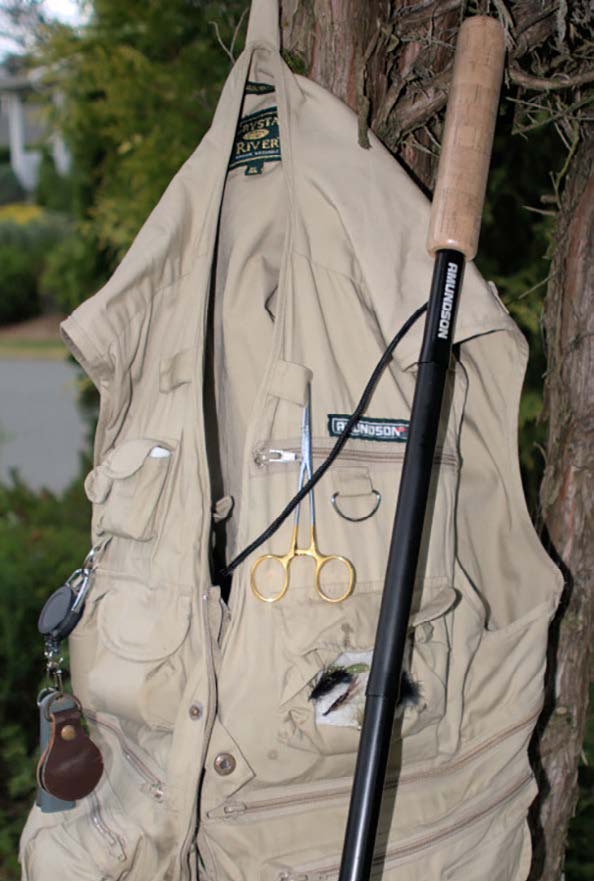
There you have it! These are the accessories, or what I like to call paraphernalia (sounds ominous doesn’t it?) I love my paraphernalia. When I’m bored at home on a cold, wet winter’s day, I will sometimes dig out my vest and go through it all under the auspices of checking and maintaining it. However, I think I just like playing the kid in the candy store again.
Go wander and browse your local fly shop and look at all the stuff they have. Hopefully, the information I just provided will help you filter out what you need and what you don’t, and what to look for in quality and usefulness.
Per our affiliate disclosure, we may earn revenue from the products available on this page. To learn more about how we test gear, click here.






